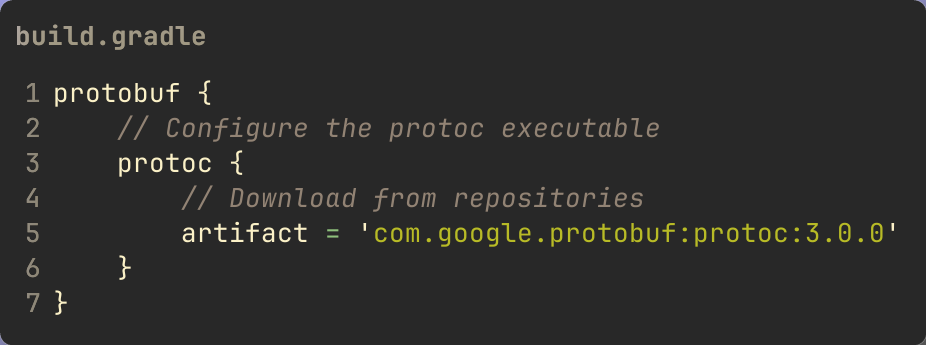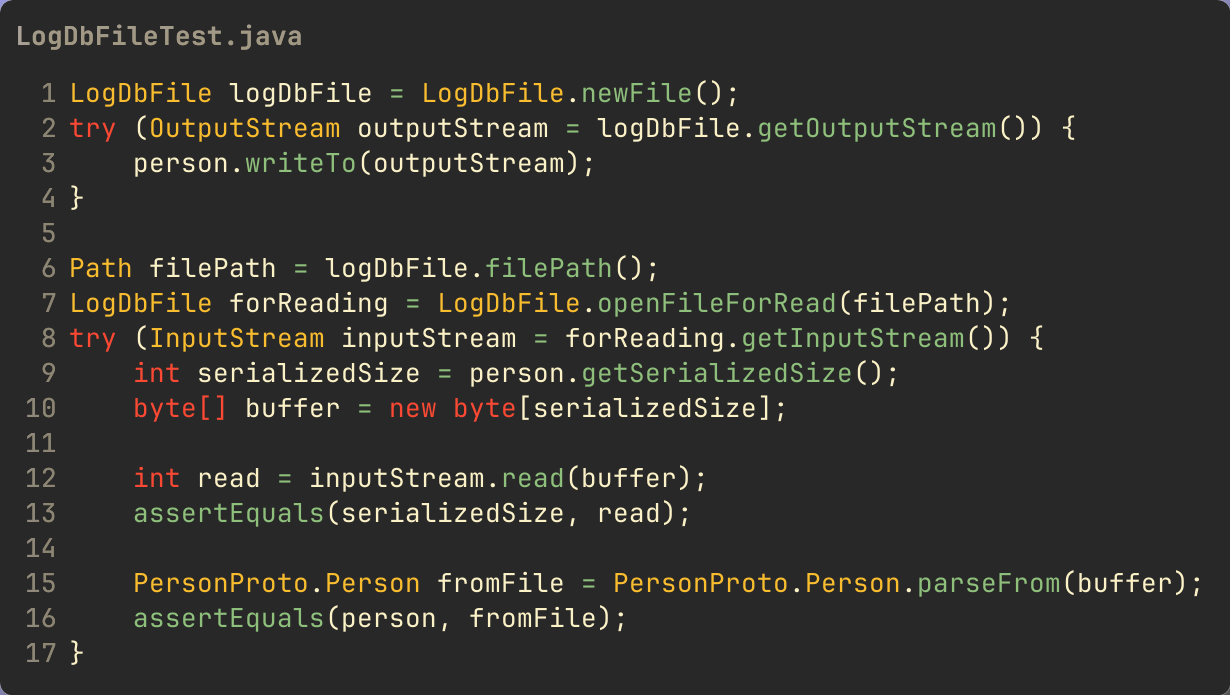In my previous post about Using off-heap memory in Java programs I showed how to set up a memory-mapped file. Now that we have a memory-mapped file, let’s write something to the file. There are different approaches to how to serialize Java objects obviously including the built-in Java serialization. But in this post I’m going to use Protocol Buffers (AKA protobuf) for serialization, because why not? It will also give an opportunity to show how to automate the use of protobuf in your automated build using Gradle.
Protocol Buffers are a recent incarnation of a technique that’s been around for a long time --- a mechanism for describing data in a language- and platform-neutral form which can be used to generate code for (de)serialization. Take XDR for example. This is very similar to protobuf and was used in the RPC implementation originating with Sun in SunOS/Solaris (ah the good old days). Just as you can use protobuf for (de)serialization even if you aren’t using Google’s gRPC, you could use XDR for (de)serialization without Sun RPC.
There was also the CORBA (Common Object Request Broker Architecture) and its IDL (Interface Description Language). There are a lot of “IDLs” as the preceding link shows. And as for CORBA, there was actually support in Java for CORBA as CORBA’s heyday coincided with Java’s rise.
The main point is that what protofbuf is doing is nothing new. What goes around comes around.
With protobuf you create a .proto file where you define “message” formats. For
this example we’ll define a Person with some attributes including an Address.

Some things to note in this definition are
syntaxspecifies the protobuf version- there is both a
packagedefinition as well as anoption java_packagedefinition; protobuf is language-agnostic and thepackagedefinition is for its own namespacing, while the Java package specification is for the mapping to Java. I set them the same but that isn’t required. - the
option java_outer_classnamespecifies what the code generator should use as the class containing the code it will generate for the subsequentmessagedefinitions. - each type you want to define is a
messagewith various fields, and each field must have a unique integer ordinal; the types of fields are language neutral and map to specific language types per a defined spec - you can have repeated elements, as shown with the
repeated Addressfield - you can have nested definitions like with the
Addressmessage definition within thePersonmessage; alternatively I could have specifiedAddressin its own.protofile and used animportstatement e.g. if I was going to useAddressin multiple message definitions.
Given a .proto file as above a compiler is used to generate source code which
is then used in your own code. The protobuf compiler is called protoc and
you invoke it like any compiler, providing the .proto source file(s). But
obviously you want to have this automated in your build. With Gradle, there is a
protobuf plugin. It is
pretty straightforward to use in your Gradle build. A very nice convenient
feature of the plugin is that it can (optionally) download the protoc
compiler for you automatically, so you don’t have to ensure it’s
installed wherever your build is executing.
First, add the plugin:

Then add the protobuf library dependency:

Finally, configure the plugin to download protoc if you want that:

By default the plugin expects your .proto files to be in src/main/proto but
you can configure that as well as several other things (e.g. the location for
the generated sources). See the plugin documentation in the link provided.
Now how do you use the generated code? Protobuf uses a “builder” pattern for constructing instances.

There are a few different methods that can then be used to serialize the
Person instance e.g.
public byte[] toByteArray();
public void writeTo(final OutputStream output);and a few others. As I integrated this with my LogDbFile example, I used the
writeTo(OutputStream) method, after enhancing my LogDbFile class to expose
an OutputStream (and an InputStream).

Since the idea with this LogDb is to simulate an append-only file, you can
either write (to the end) or read, so in this example I create a new file -
implicitly for writing as I have it right now - and I serialize to the
OutputStream. Then I open the same file for reading, allocating a buffer to
store the data read from the file, then deserialize using the generated
Person.parseFrom(byte[]) method.
As you can see, it’s pretty straightforward to use protobuf as a
serialization mechanism. One benefit of this over, say, Java native
serialization is that the serialized content is language-neutral. I
could write a C/C++ program or a Go program with the
same .proto file and read the data I
wrote using my LogDbFile example.